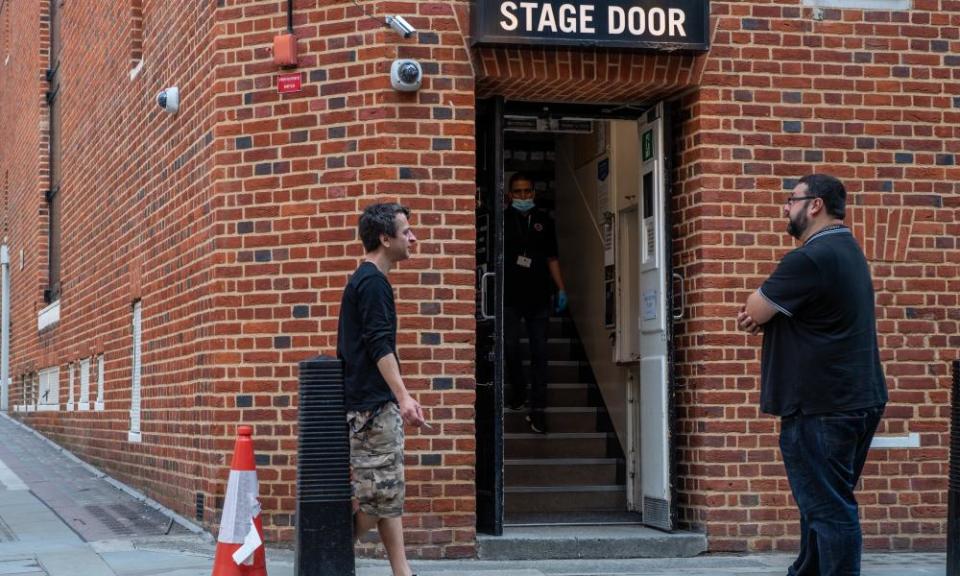Britons still on furlough most likely to be arts and creative workers

Staff in the arts and creative industries overtook hospitality workers as the most likely to be on furlough in June, as the number of people being paid through the UK scheme dropped by 590,000 to 1.9 million ahead of government subsidy cuts that forced employers to begin paying towards the job protection scheme.
HMRC figures showed that the number of workers on the scheme dropped from 2.5 million to 1.9 million, its lowest level since the start of the Covid pandemic, before a 10% cut in the subsidy to employers at the start of July.
The arts and creative industries became the biggest users of furlough, and with hundreds of events cancelled until next year, many are likely to continue on the scheme until it closes in September.
About half of all staff in air passenger transport and travel agencies were also still being paid through the scheme in June.
Welcoming the fall in furloughed workers on a visit to Scotland, the chancellor, Rishi Sunak, said usage was likely to decrease further in July and August as the economy continued to reopen and more businesses needed to bring back staff.
However, critics said thousands of businesses were still unable to operate fully and needed to keep staff at home, and warned that a further 10% cut to the furlough subsidy due to take effect on 1 August could push them into insolvency.
Significant elements of the government’s pandemic rescue schemes are due to end in the autumn, including a £20-a-week increase in universal credit, which welfare charities say has said prevented hundreds of thousands of families from falling into poverty.
Related: England’s 19 July reopening may boost UK plc but a longer-term approach is needed
The Resolution Foundation said a slower than expected fall in furlough numbers during June revealed that many sectors of the economy were continuing to struggle and that benefits cuts should be delayed.
Adding its voice to earlier warnings from trade unions and anti-poverty groups, the independent thinktank said ministers should be concerned that almost 2 million staff were on full-time or part-time furlough and could be made redundant when the scheme ends.
A spokesperson for the foundation said: “With employer contributions to furloughed staff doubling from this Sunday, and the scheme ending completely in just two months’ time, it’s vital that as many furloughed staff as possible return to work soon, in order to limit the rise in unemployment this autumn.”
Younger workers and those in the hospitality industry were among the most likely to have gone back to work.
One in 10 workers aged 65 and over were on furlough – the highest share of any age group – leading to accusations that employers had “parked” older workers while bringing back younger people to the workplace.
The share of furloughed staff aged under 18 fell from 13% in May to 7% in June, and from 10% to 6% for those aged 18 to 24.
London continued to be the furlough capital of Britain, with nine of the 10 local authorities with the highest rates, including Newham, where City airport is based, and Heathrow airport’s base in Hounslow. Figures for both boroughs showed that one in eight workers were still on the job retention scheme in June.
Sunak said he welcomed the “striking” fall in the number of young people on furlough, “who, for the first time ever, no longer have the highest takeup of the scheme”.

 Yahoo Finance
Yahoo Finance 